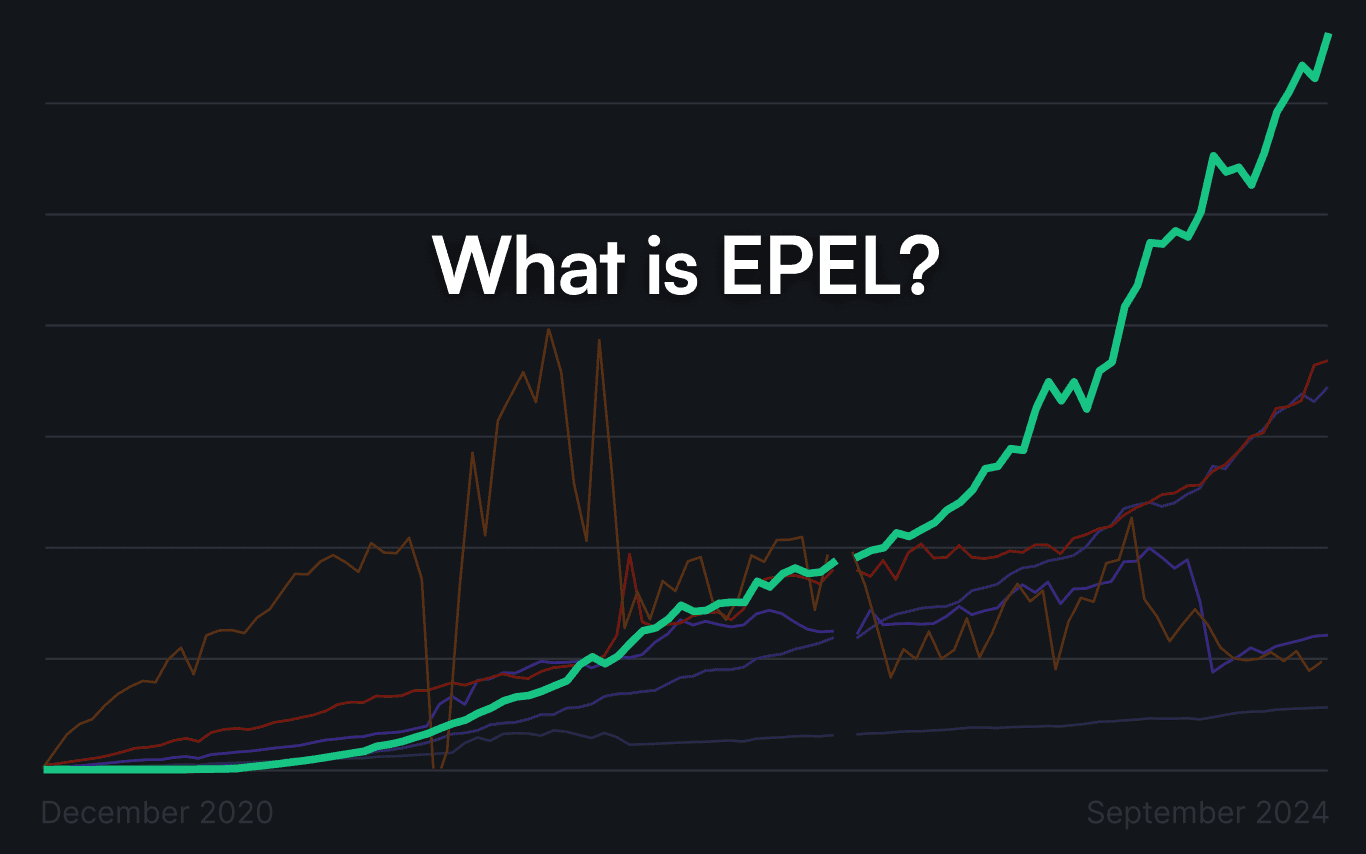5 min read
Why Fedora EPEL statistics might be the best indicator of Enterprise Linux adoption

It’s very difficult to understand which Enterprise Linux distributions are most popular because nearly every organization is concerned about security and privacy. In this context, admins typically disable usage tracking and external telemetry, and it is rare that they would actually share these numbers.
Statistics from Fedora’s Extra Packages for Enterprise Linux (EPEL) repository, however, present a reliable way to understand adoption trends across the Enterprise Linux ecosystem. EPEL is a Fedora-driven project that provides a rich library of open source software for Enterprise Linux distributions.
Enterprise Linux distributions intentionally ship with smaller, more tightly managed software selections to reduce maintenance and ensure stability. EPEL fills that gap, offering popular packages like the KDE desktop, mosh, and many others that administrators want but that aren’t included in the base repositories.
Because EPEL serves all major Enterprise Linux distributions from a shared infrastructure, its traffic reflects how many systems of each distribution are in active use. This makes it a uniquely valuable data source for gauging real-world adoption.
The power of dnf countme
Since version 8, Enterprise Linux distributions have used the dnf package manager, which includes a simple but powerful feature called **countme**. When a system checks in to download a package or update, dnf includes the system age as a bucketed value on one request to a repository (or metalink) per week. Together with information included in DNF’s User-Agent header and taking into account the repository requested, we can assemble some useful information about the system:
-
The operating system name and version (for example,
Rocky Linux 9.6) -
The system architecture (
x86_64,aarch64, etc.) -
The age of the installation, assigned to one of four buckets: 0–1 week, 1–2 weeks, 5–24 weeks, and 25+ weeks.
You’ll notice that this information doesn’t identify users or include sensitive data. Instead, it helps maintainers and analysts see how many systems of a given type are active and how long they’ve been running. From these lightweight signals, it’s possible to infer how many systems of each Enterprise Linux distribution are checking in to EPEL, how long they’ve been active, and which versions are most common.
Why EPEL data reflects real adoption
EPEL adoption varies significantly by deployment type, but the pattern is consistent across distributions. Desktop and developer environments approach near-universal EPEL adoption (close to 100%). Desktop users often need EPEL as a dependency for third-party repos like RPMFusion, while developers rely on it for fundamental tools like mock and koji—some of the same tools used to build the distributions themselves. Systems with unique hardware requirements similarly depend on EPEL for specialized tooling not found in default repositories.
Production servers, however, tell a different story. These environments run as close to default configurations as possible, with an estimated 30% enabling EPEL. Most production workloads today are containerized (running in Podman or Kubernetes), reducing the need for additional packages on the host system.
Because these usage patterns are roughly consistent across distributions, EPEL statistics provide a neutral way to compare them. If Rocky Linux and AlmaLinux have similar EPEL adoption rates, then a comparison of their EPEL check-ins provides a reliable measure of their relative total adoption.
In short, EPEL data doesn't show how many systems exist overall, but it does show how many there are relative to each other, without bias or guesswork.
Based on the latest EPEL statistics, the trends that began when CentOS was discontinued have now stabilized. The numbers make several things clear:
-
Rocky Linux is the leading Enterprise Linux distribution. Its share of EPEL activity has consistently outpaced the others.
-
CentOS is now effectively legacy. Remaining instances tend to fall into either the youngest or oldest “system age” buckets, suggesting they are either ephemeral CI/CD environments or forgotten legacy systems. Fortunately, the data shows no evidence of new CentOS deployments; users are either running very old systems or temporary test environments.
-
Migration choices have been made. Most organizations that replaced their unsupported CentOS deployments have chosen their replacement OS. The data shows no significant RHEL gains beyond expected upgrades from existing RHEL users.
-
Enterprise Linux users are conservative upgraders. Even with compelling improvements in EL10, adoption remains modest. Ephemeral usage predictably spikes around new releases, both minor and major versions, reflecting build systems, migration testing, and certification processes. But sustained adoption follows slowly, consistent with the ecosystem's stability-first philosophy. Growth patterns also show predictable seasonality, with new deployments slowing around year-end holidays.
-
The ecosystem extends beyond major distributions. The data occasionally surfaces surprises: Alibaba Cloud Linux has emerged as a growing presence in EPEL statistics, despite not explicitly advertising Enterprise Linux compatibility or using corresponding version numbers. Such anomalies remind us that the EL ecosystem is broader and more dynamic than commonly understood.
Bragging rights aside, EPEL statistics don’t just help distribution maintainers understand their user base; they also show the broader health of the Enterprise Linux ecosystem — how much it continues to grow, how long systems stay active, and how communities respond to change.
Methodology and limitations
The infrastructure behind these statistics is substantial. For context, Rocky Linux's MirrorManager access logs alone generate 2-3GB of data daily, and the EPEL repositories assuredly generate much more. The EPEL data itself is published by the Fedora Project at https://data-analysis.fedoraproject.org/csv-reports/countme/totals.csv, compiled from sanitized HTTP access logs on Fedora's MirrorManager.
While EPEL statistics are the best publicly available indicator of Enterprise Linux adoption, several factors affect representation:
-
Distribution-specific biases exist. RHEL deployments are underrepresented because they tend to be managed by experienced sysadmins running internal EPEL mirrors (and thus uncounted). Oracle Linux is even more dramatically underrepresented—not due to low usage, but because Oracle's epel-release configuration routes traffic through Oracle-hosted infrastructure rather than Fedora's mirrormanager, making those systems invisible to EPEL statistics entirely.
-
Architectural representation varies. While x86_64 dominates the statistics as expected, AArch64 shows healthy and growing representation. Specialized architectures like s390x mainframes and PPC64le systems are predictably underrepresented; such enterprise-grade hardware typically runs behind internal mirrors. Interestingly, Rocky Linux has become the de-facto choice for the handful of RISC-V Enterprise Linux deployments in the wild, though EPEL doesn’t yet support this architecture.
-
EPEL captures only internet-connected systems actively using EPEL repositories, which is obviously a subset of all deployments. This makes EPEL statistics an indicator of relative adoption and ecosystem trends rather than absolute market share.
Despite these limitations, EPEL statistics remain uniquely valuable because they reflect actual system behavior across all major distributions from shared, neutral infrastructure. That’s something no other public data source can provide.
For CIQ, these insights validate what we see in our customer and community interactions: Rocky Linux has become the trusted, production-grade successor to CentOS, chosen for its stability, transparency, and open governance.
EPEL statistics offer the most consistent, unbiased lens we have into the health and composition of the Enterprise Linux ecosystem. Unlike marketing claims or casual surveys, these stats reflect real-world usage patterns from millions of actively managed systems. They show not just which distributions are used, but how they're deployed, how long they persist, and how the community responds to ecosystem changes.
Built for Scale. Chosen by the World’s Best.
1.4M+
Rocky Linux instances
Being used world wide
90%
Of fortune 100 companies
Use CIQ supported technologies
250k
Avg. monthly downloads
Rocky Linux



